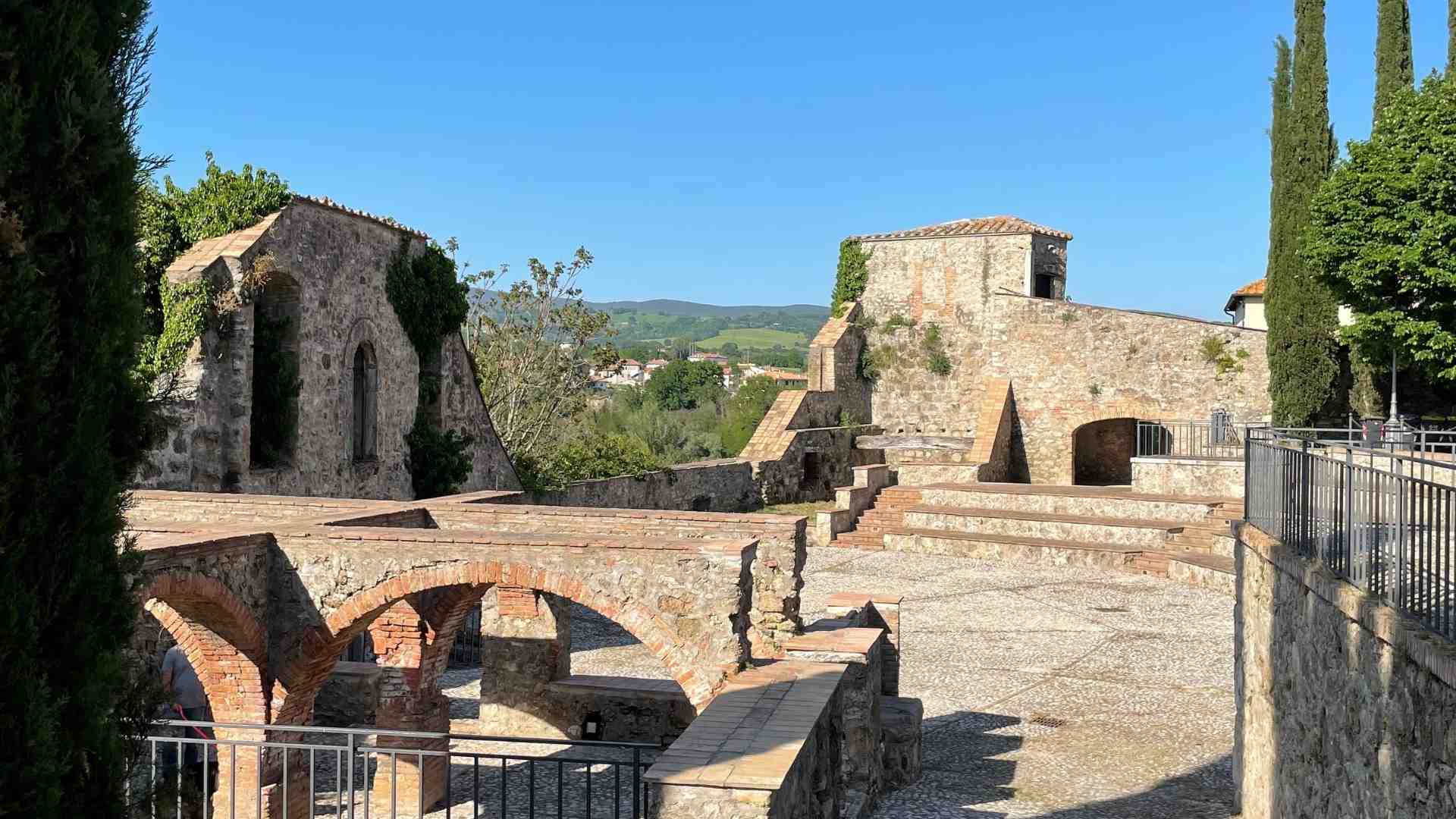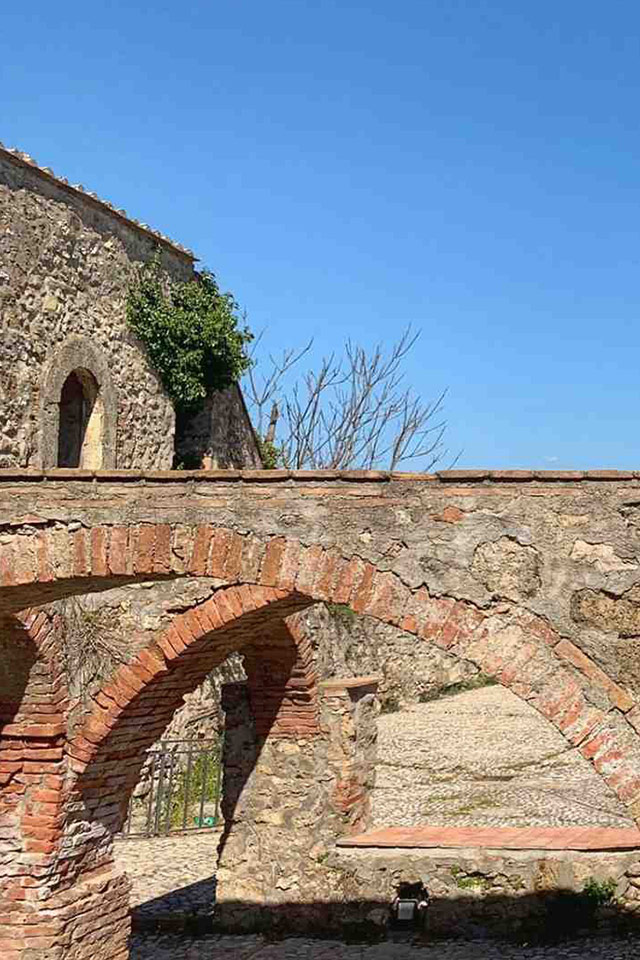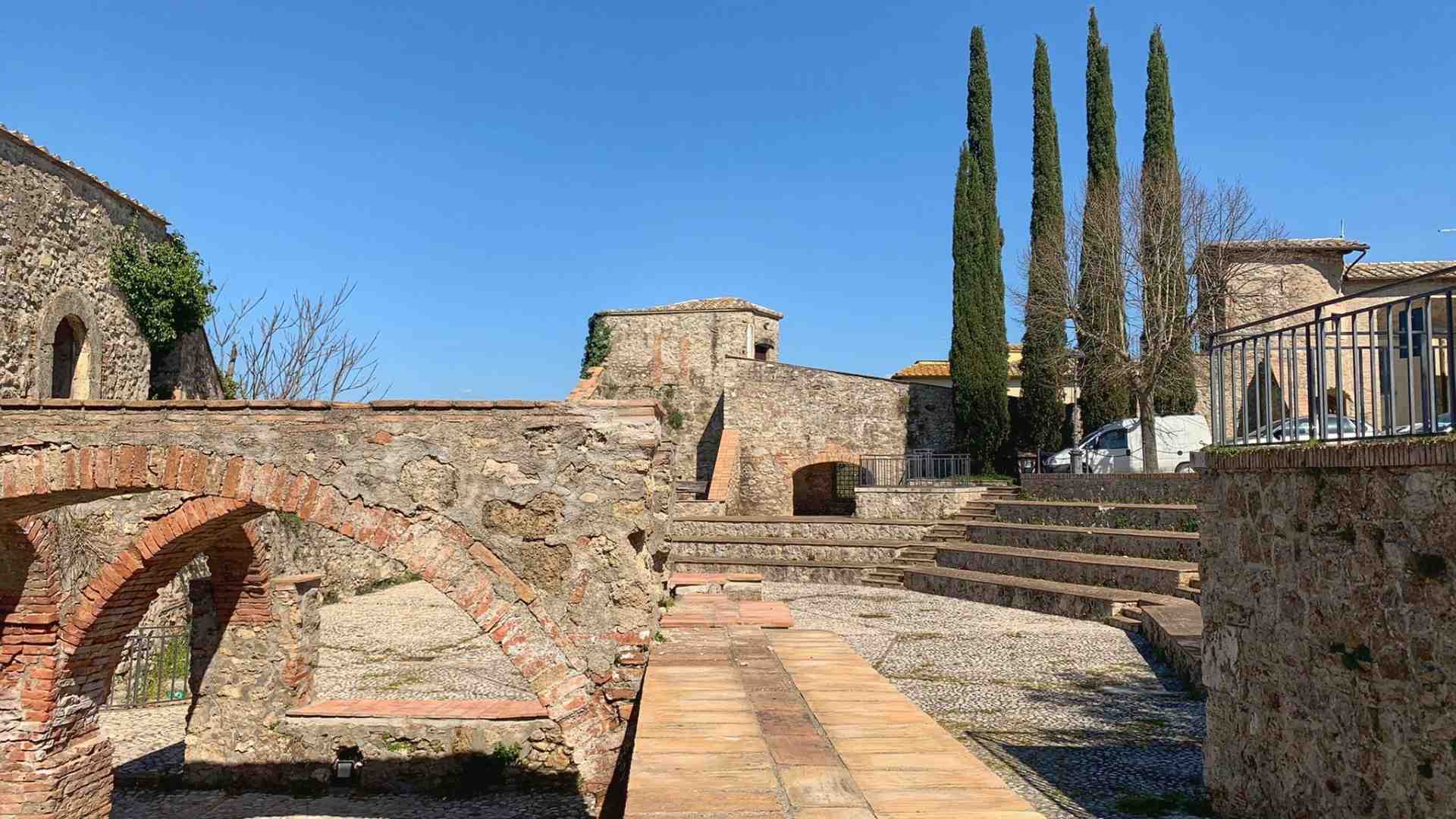
punto di interesse
point of interest


About the impressive Castle of Attigliano, a beautiful example of a fortificate medieval structure, renovated during the years and then partially demolished, in the 1964 for works of consolidations and renovated, remains today just the scent of its incredible past.
Past that you can relive pass the massive Entrance Door, in the past equipped with a lift bridge, ditch and guard.
Entering in the old town you can see, in front of a colourful tower with a clock painted, in the left, the pretty Rocca Square with trees and benches, in the side a cavea called Amphitheatre , and in the deep, lonely, six columns which keep company to the massive walls from which you can see a beautiful view on the Valley of Tevere.
The history tells that this walls, after the probably foundation which was around the X century, period where is the descent of Ottone III and of his count Offredo, were built with its five defensive towers and with a characteristic pentagonal tower, creating the actually Castle of Attigliano, attested for the first time in a document of 1105.
The tower, which stood out on the Valley of Tevere, placed in a higher point of the rock spur, where even today is rises Old Attigliano, was a privileged and strategic point of lookout for the control of an important area for the Papal State and for the families who fought over the castle in the war between guelphs and gibberellins.
Walls, towers and the pentagonal tower were revised by Bartolomeo of Alviano in this period when, supported before by the Church, the people of Alviano extended the power on all of central Italy. His successor Consulo had important relevance in Attigliano, so much that there is conserve an epigrafe today to Santa Maria of Piano, in the past placed in the Palace Baronale.

About the impressive Castle of Attigliano, a beautiful example of a fortificate medieval structure, renovated during the years and then partially demolished, in the 1964 for works of consolidations and renovated, remains today just the scent of its incredible past.
Past that you can relive pass the massive Entrance Door, in the past equipped with a lift bridge, ditch and guard.
Entering in the old town you can see, in front of a colourful tower with a clock painted, in the left, the pretty Rocca Square with trees and benches, in the side a cavea called Amphitheatre , and in the deep, lonely, six columns which keep company to the massive walls from which you can see a beautiful view on the Valley of Tevere.
The history tells that this walls, after the probably foundation which was around the X century, period where is the descent of Ottone III and of his count Offredo, were built with its five defensive towers and with a characteristic pentagonal tower, creating the actually Castle of Attigliano, attested for the first time in a document of 1105.
The tower, which stood out on the Valley of Tevere, placed in a higher point of the rock spur, where even today is rises Old Attigliano, was a privileged and strategic point of lookout for the control of an important area for the Papal State and for the families who fought over the castle in the war between guelphs and gibberellins.
Walls, towers and the pentagonal tower were revised by Bartolomeo of Alviano in this period when, supported before by the Church, the people of Alviano extended the power on all of central Italy. His successor Consulo had important relevance in Attigliano, so much that there is conserve an epigrafe today to Santa Maria of Piano, in the past placed in the Palace Baronale.

Were the people of Alviano around the XVI century and definitely the Farnesi then, to build and expand the Palace Baronale which, with the years, included the pentagonal tower.
The palace reached four floors of height: in the ground floor, the cellar, the pantry, the stable and the cistern; the second floor the service rooms; in the third floor the noble floor; in the fourth floor of the servants.
The palace was shot down in 1964 for reasons connected to the instability of the palace, due to the slipping of the ground downstream, and for the bold modifications made between the XIX century and the beginning of XX century, which took off the stability of the total structure.
In the same place where the palace was stands there is a beautiful square where you can sit between the benches, and admire the sublime scenery and think of the ancient glories of this inestimable place.

Were the people of Alviano around the XVI century and definitely the Farnesi then, to build and expand the Palace Baronale which, with the years, included the pentagonal tower.
The palace reached four floors of height: in the ground floor, the cellar, the pantry, the stable and the cistern; the second floor the service rooms; in the third floor the noble floor; in the fourth floor of the servants.
The palace was shot down in 1964 for reasons connected to the instability of the palace, due to the slipping of the ground downstream, and for the bold modifications made between the XIX century and the beginning of XX century, which took off the stability of the total structure.
In the same place where the palace was stands there is a beautiful square where you can sit between the benches, and admire the sublime scenery and think of the ancient glories of this inestimable place.
discover all the points of interest of the village
Information, appointments and travel proposals on:
The Progressive Web App is part of the project “Le Terre dei Borghi Verdi”, realized in collaboration and with the contribution of Regione Umbria – Assessorato al Turismo
©2021 Le Terre dei Borghi Verdi
Le Terre dei Borghi Verdi
Welcome in Southern Umbria,
where the slowness becomes value
Information, appointments and travel proposals on:
The Progressive Web App is part of the project “Le Terre dei Borghi Verdi”, realized in collaboration and with the contribution of Regione Umbria – Assessorato al Turismo
©2021 Le Terre dei Borghi Verdi